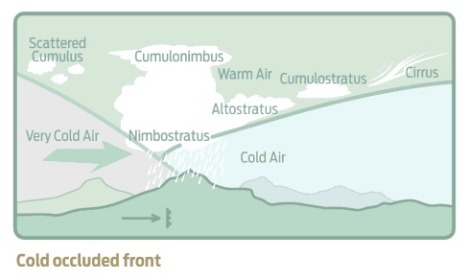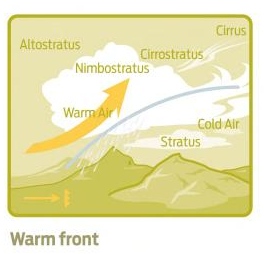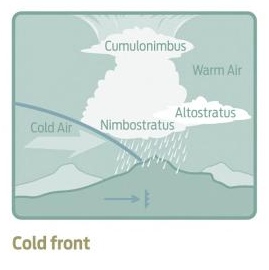Colliding air masses are known as fronts. The approaching front, usually from the west in the northern hemisphere collides with the outgoing front, forcing it to move eastward. The faster the incomming front approaches the more violent the collision between the two fronts, resulting in stormier weather.
There are three types of fronts
Occluded Fronts A collision of three air masses. A fast-moving cold front over-takes a warm front, lifting the warm air mass. The incomming cold front then collides with the departing cold air mass. If the incomming cold front is warmer than the departing one, called a warm occluded front (WOF). The new cold front climbs over the existing one while trapping the warm front high in the middle. If the incomming front is colder than the departing one, a cold occluded front (COF). It wedges under it.
Signs - Wind direction changes, usually so it blows from the north-northwest; falling, then rising barometric pressure.
Result - Storms possible; light to heavy rain folowed by dry weather after the front exits. With WOFs cold temps get milder; with COFs, cold temps get colder.




